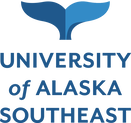Knowledge of the Lingít language connects us to this place and supports a regional identity. It has been spoken in Southeast Alaska for thousands of years, contains wisdom and local knowledge and is a connection to our home - Dzantikʼi Héeni (Juneau). Yet less than 40 fluent speakers remain today signaling an urgency to teach the language to our young people. For these reasons, JAMM is piloting a program in partnership with Lingít elders, speakers, scholars and musicians called Haa Tóo Yéi Yatee (It is inside us), which will use Lingít language as the medium of instruction for its kindergarten and 1st grade violin program at Sit' Eetí Shaanáx̱ Glacier Valley Elementary School. Music and language share many lifelong benefits (see below), which made this initiative a perfect fit for JAMM. As JAMM supports music of this place, so does it support the language of this place. Gunalchéesh to the following Artful Teaching partners who are working together to hold each other up as we engage in this vital work and to the Margaret A. Cargill Philanthropies for their financial support:
Learning Lingít, the indigenous language and culture of Southeast Alaska, is reason enough to launch this language revitalization initiative, but there are many benefits to second language learning that music also shares, especially when introduced at an early age. This list of benefits is also outlined in the video below:
- boosting retention and recall speed
- increasing ability to focus
- deepening the understanding of how all languages work, which helps students learn other languages more easily (and the Lingít language has 24 sounds not found in the English language, four of which are unique to any language in the world!)
- performing better on tests of reading comprehension and vocabulary
- creating meaning from unfamiliar cultural and symbolic systems, which increases cultural awareness, empathy and tolerance of other people
- making you a better student of the world
|
|
|
Our Team
During the summer of 2021, this team of elders, scholars, musicians and teachers worked together to make the JAMM violin curriculum more place-based and culturally sustaining. Words were identified in Lingít to communicate musical terms and parts of the violin. This team will continue to work together throughout the school year to create materials and deliver instruction to over 100 kindergartners and 1st graders for 90 minutes/week. Lingít language coaches will attend each violin class to observe, document and provide Lingít language learning feedback for JAMM teaching artists and classroom teachers.
Gunalchéesh, X̱ʼunei Lance Twitchell, for leading this team and creating the following video, which details the Lingít names for the parts of the violin and bow. He has created a Youtube channel for this project where he will add more resources and has played a major role in the University of Alaska Southeastʼs two certificate programs: Indigenous Language Teaching and Indigenous Language Speaking.
Gunalchéesh, X̱ʼunei Lance Twitchell, for leading this team and creating the following video, which details the Lingít names for the parts of the violin and bow. He has created a Youtube channel for this project where he will add more resources and has played a major role in the University of Alaska Southeastʼs two certificate programs: Indigenous Language Teaching and Indigenous Language Speaking.
Our Purpose
JAMM provides 90 minutes/week of in-school violin instruction to all kindergartners and first graders as an intervention for school readiness skills, which means that all students at this critical age have the opportunity to become fluent Lingít speakers because it is "best to start by age 10 if you want to achieve the grammatical fluency of a native speaker" (Scientific American, 2018). Both JAMM teaching artists, school music teacher, and Kindergarten and 1st grade teachers attend these violin classes, which allows the language to spread to K/1 classrooms and all K-5 music classes at Sítʼ Eetí Shaanáx̱ Glacier Valley and all JAMM after-school classes at Auke Bay, Sítʼ Eetí Shaanáx̱ and Riverbend Elementary Schools. This initiative also meets all four areas of the Juneau School Districtʼs strategic plan: achievement, equity, relationships and partnerships.
Our Approach
Music, storytelling and movement are all traditional ways of acquiring and passing on the traditions and history of the Lingít people. Brain-based learning also confirms that these approaches engage and make learning "sticky" for learners of all ages. This is why JAMM Haa Tóo Yéi Yatee is grounded in song, story, rhythm and movement. With permission, we have included traditional Lingít songs, as well as contemporary Lingít music by talented artists in our community. Other songs pair nursery rhyme melodies with Lingít phrases to help students with fluency, comprehension and recall of practical, everyday language use. Please visit this website for curriculum resources as we continually create and build more online materials. Our hope is that families will practice alongside their child outside of school by using this website. Here are four examples:
|
|
Traditional lullabies shared by Charlie Joseph, Sr. Ḵaal.átkʼ came from generations of parents and grandparents - and shared among communities. Charlie taught and recorded 12 of these lullabies for his daughter, Daasdiyaa Ethel Mackinen, who was trying to teach the language, found that these songs were much easier for children to learn. Traditionally the songs were sung without a drum, but Charlie put a drum beat to them to help the children learn traditional rhythms. Gunalchéesh, Koolyéik Roby Littlefield, for providing the history of these songs, including Charlie Joseph Ḵaalʼátkʼs role in the 1980 first Sealaska Elderʼs Conference held in Sitka.
|
|
Contemporary Lingít Songs: George Demientieff Holly is an Deg Xitʼan Athabascan teacher of indigenous languages using song, story and movement. He strongly believes in upholding and supporting the language and culture of the place we live. He worked with children at Tlingít Culture Language and Literacy program in Juneau and composes many songs in indigenous languages. In this video, George sings his composition, "Gunalchéesh Áyá, which JAMM will integrate into its violin program to instill the tribal value of gratitude.
|
|
|
|
Nursery Rhyme Melodies with Lingít Phrases: Koolyéiḵ Roby Littlefield who teaches Beginning Lingít at the UAS Sitka campus uses childrenʼs nursery rhymes and patterned stories to help teach the Lingít language. She has translated the finger play game and song of Where is Thumbkin? into Lingít and models holding her arms above her head to encourage our young violinists to build their upper body strength for holding the violin.
|
|
Incorporating Movement & American Sign Language: Janet Olmstead, JSD Deaf Instructor, and Neelaatughaa Anna Clock, a student at UAS studying the Lingít language, have been working together to create interactive Google slide presentations that include images, text and American Sign Language (ASL). With every spoken word or phrase, our program aims to attach ASL with it to limit the amount of English we use and deepen comprehension through movement and the body.
|
Our Philosophy
Haa Tóo Yéi Yatee and its mission to increase the number of fluent Lingít speakers depends upon the support and teamwork of home, school and community members. This is why the tribal value Dikéexʼ wooch g̱aylisháat (hold each other up) forms the foundation of this project. Yaandu.ein Paul Marks and Yeeskanaalx Tláa Rochelle Smallwood created this beautiful video telling the oral narrative of the Aas Ḵwáan (Tree People), which powerfully depicts the importance of holding each other up.














